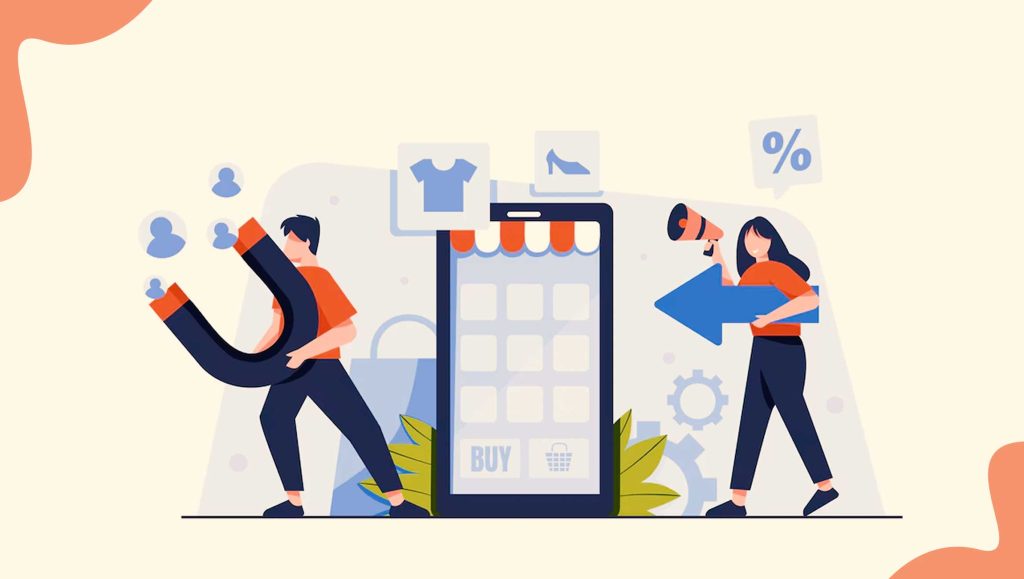“Every consumer wants a different experience when shopping and this experience becomes the differentiating factor for many successful business models.” – The Deloitte Consumer Review
Go back a decade ago and you would see e-commerce as a growing fad, today, it has become an indispensable part of consumers’ lives. The growing penetration of smartphones has made e-commerce more viable to the general masses over all these years. It has only shifted the mindset of consumers from offline to online shopping.
As per a survey by McKinsey, most industries that were once selling their products offline have not adapted to e-commerce. Here are some of the trends, we should take note of:
- It has been predicted that 95% of the purchases will be made digitally through e-commerce by 2040.
- 55% of online shoppers share their disappointment with online purchases with their friends and colleagues.
- 57% of online shoppers purchase from retailers based out of other countries.
E-commerce technologies and trends have geared up, so has the competition. Today, consumers have ample options when it comes to buying things online. The market gets saturated with similar kinds of offerings. Marketers and retailers are realizing that to set themselves apart from the competition, they have to provide something better than their competitors. That’s where customer engagement and better conversations come into play.
Understanding customer engagement in e-commerce
Every consumer seeks a distinct and personalized experience when shopping from a brand. When this experience is used correctly, it becomes essential in shaping the success of many business models.
It applies to e-commerce stores as well. However as these stores lack a formal way to record their interpersonal interactions with their customers, there is a need for a well-planned customer engagement strategy to bring customers back to the store.
Numerous studies have pinpointed the relationship between customer engagement and higher sales. As per the PwC, e-commerce businesses are likely to gain measurable benefits in the form of customer spending simply by changing their customer engagement strategy.
Customers are engaged as they are receiving personalized treatments from the brands and hence, brands experience more sales and revenues.
Read More: SalesTechStar Interview with Cody Manning, Chief Sales Officer at Yooz
Top Tactics to Boost E-commerce Customer Engagement
1. Live Chat and Chatbots for onsite engagement
Which e-commerce brands can survive today without having a live chat option for their customers? Research by Ecoconsultancy has proven that live chat is a customer service channel with a 73% satisfaction level.
E-commerce live chat offers real-time and onsite engagement. It is a way for your customers to skip the waiting queue and seek immediate support.
2. Social Media Activity
Many brands are offering virtual purchase options for their customers but often, customers crave a store encounter. This is where social media appears to come to the rescue. Social media acts as a saving grace for e-commerce brands who can leverage social visibility through shares, hashtags, and content to put their business on the radar of millions of prospects.
Regular social media activity gives birth to numerous opportunities for social media engagement to reinforce your brand and establish loyalty among customers.
3. Customer loyalty programs
Brands can boost customer engagement by offering customer loyalty programs. Physical as well as virtual customer loyalty programs act as a catalyst to establish customer loyalty and retention. Brands do not need one-time customers these days, they want the customers to return to the brands in the future. The easiest way to pull the customers back to the brand is by way of various customer loyalty programs.
Customers are happy as they will be rewarded with repeated purchases.
4. Co-browsing during Checkouts
Collaborative browsing, aka co-browsing, is a system that enables customer support agents to connect with your customer’s browser in real-time. Co-browsing opens multiple ways to engage with customers. Support agents can connect with the customers virtually and they can also guide them through the journey to the e-commerce platform.
5. Cart Abandonment Emails
How often do you receive an email from the brand in case you added something to the cart but could not complete the purchase? When purchasing from popular brands, users do experience this. While cart abandonment is the biggest bane to e-commerce retailers, brands are leveraging it as an opportunity to reconnect and re-engage with the audience.
top end brands retarget those customers and send them customized emails pushing them swiftly into buying again.
Wrapping Up
E-commerce is a selling channel that is continuously evolving. Additionally, new innovations enter the segment due to the changing demands of modern customers. As buying preferences are changing at the drop of a hat, brands must stay agile and at the top of these changes.
With more than 24 million e-commerce stores in the world, you need to establish and maintain strong relations with your customers. Engage with your customers at every touchpoint and hear them out, to drive long term loyalty and repeat purchases.





















